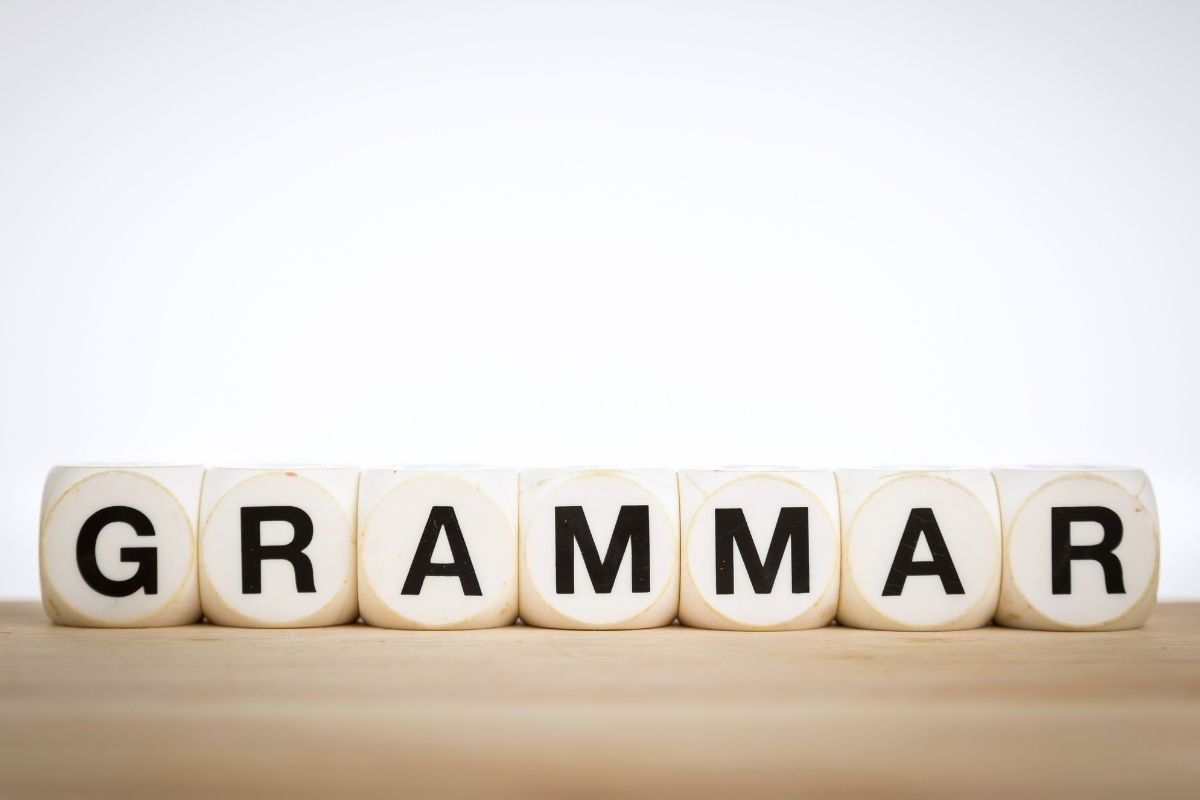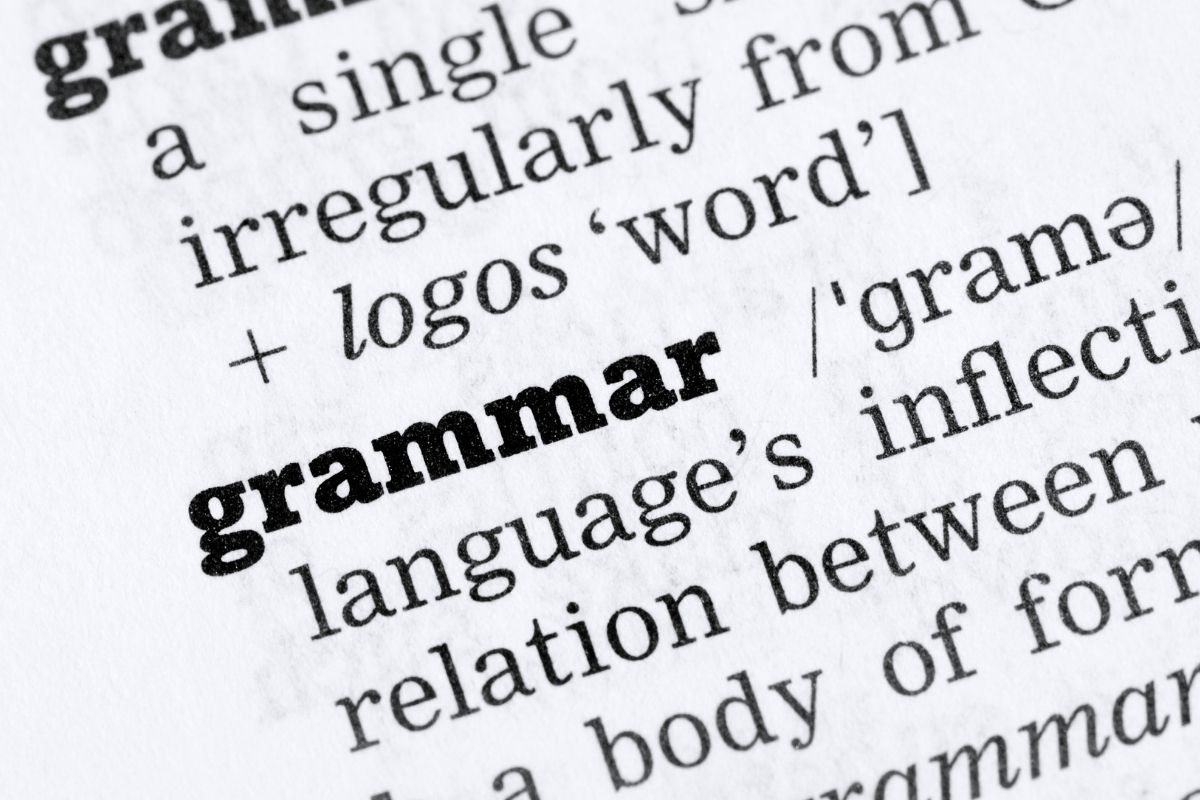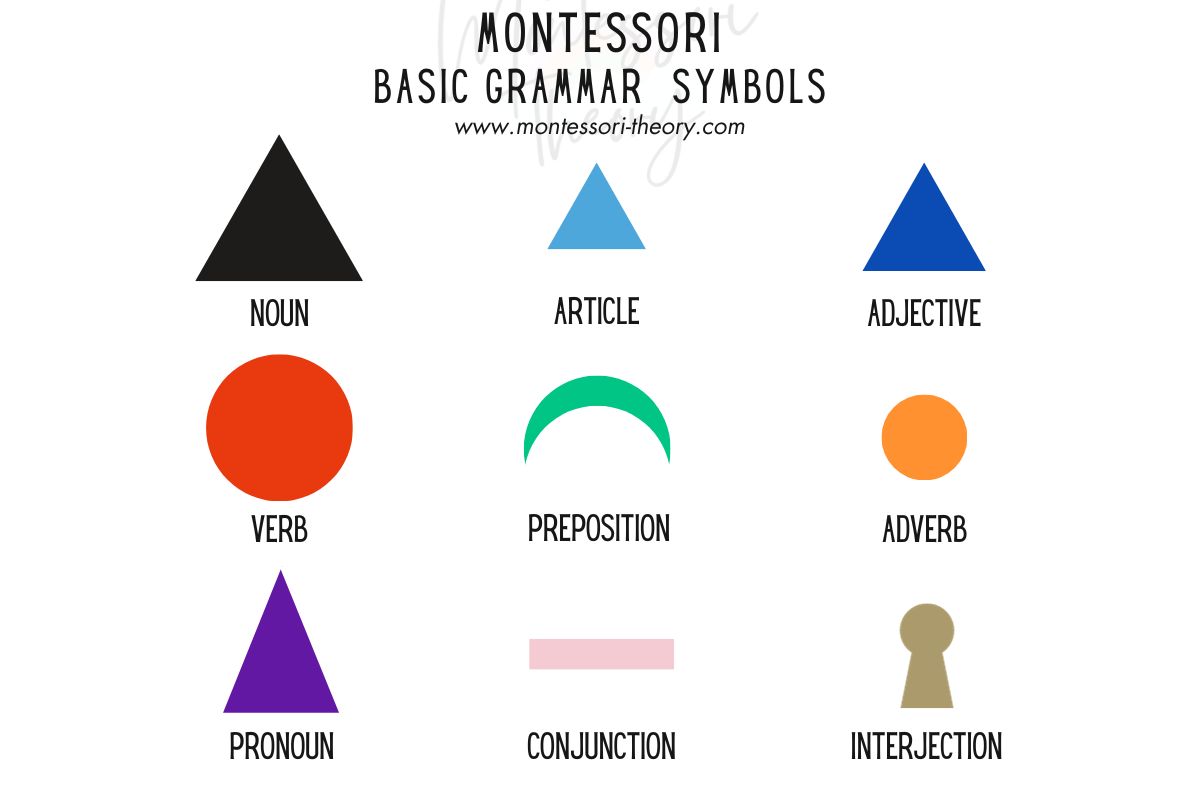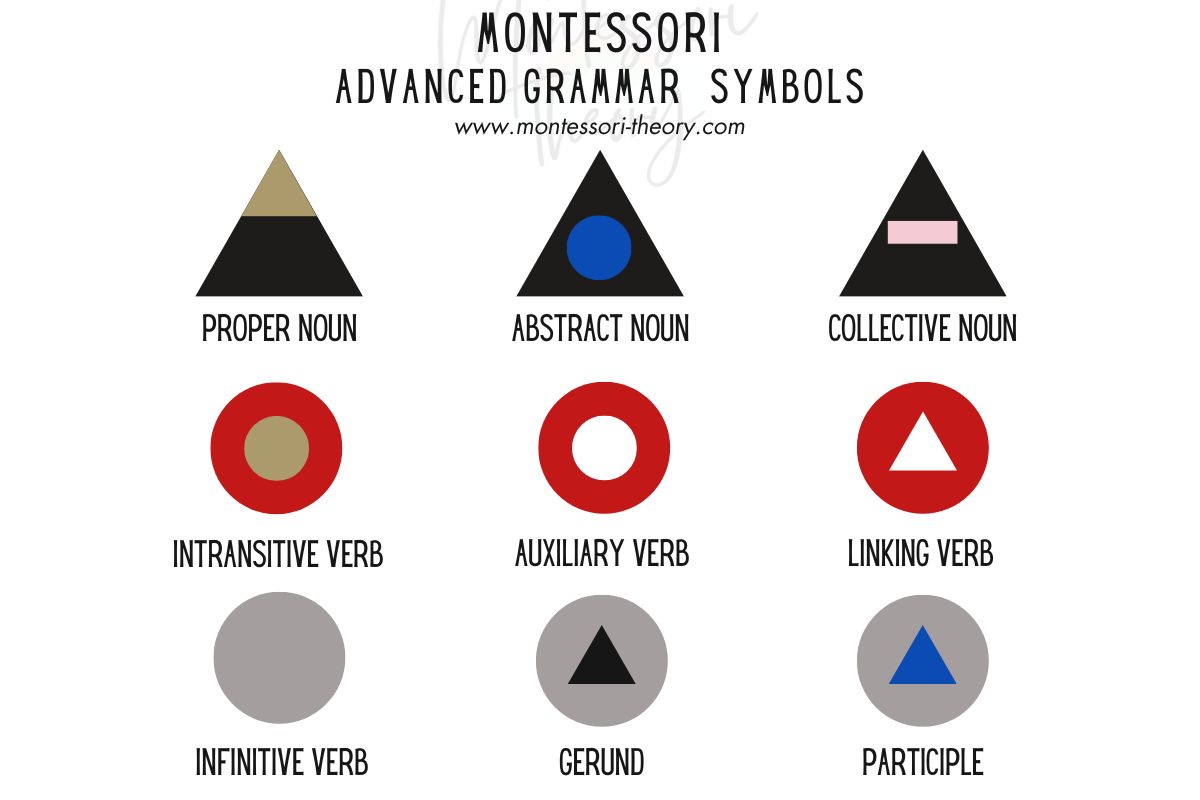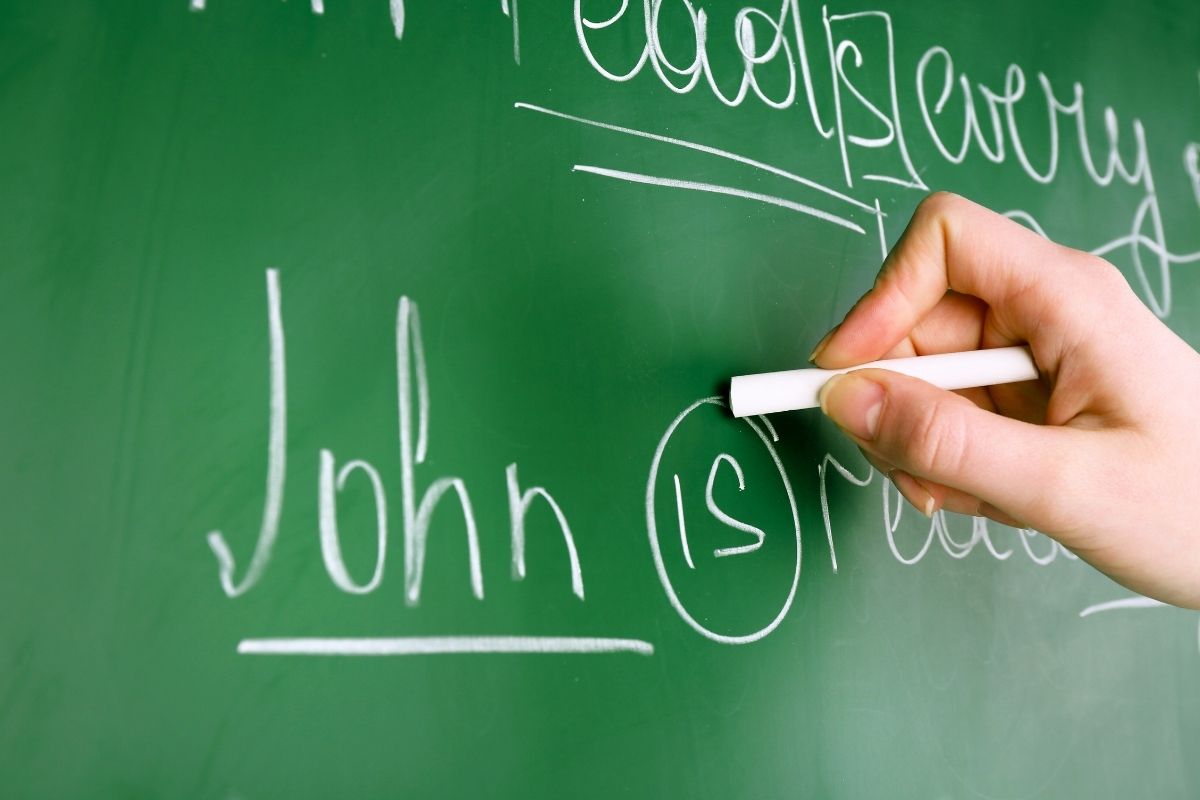The Montessori philosophy, developed by Dr. Maria Montessori, emphasizes hands-on learning, collaborative play, and self-directed activities. A key aspect of this approach in language education is the use of Montessori grammar symbols. These symbols, which represent different parts of speech with various shapes and colors, help children concretely understand language structure. This method simplifies grammar, making the complex world of language accessible and engaging for young learners.
- Montessori grammar symbols provide a hands-on, visual way for children to learn and understand language structure.
- These symbols represent different parts of speech, helping to simplify and demystify grammar concepts.
- The approach starts with basic sentence structures and progresses to more complex grammar, enhancing comprehension and appreciation of language.
- Montessori grammar lessons are interactive, combining theory with practical activities for a deeper understanding of language mechanics.
How is Grammar Taught in Montessori
In Montessori education, grammar is taught through a unique and interactive approach that emphasizes hands-on learning and visual representation. Key to this method are the Montessorigrammar symbols, each corresponding to a different part of speech, such as nouns, verbs, and adjectives, represented by distinct shapes and colors. These symbols help children concretize abstract grammatical concepts, making them more accessible and understandable.
Lessons are structured to be engaging and progressive, starting with basic sentence structures and gradually introducing more complex elements of grammar. This approach not only aids in the comprehension of language mechanics but also fosters a deeper appreciation for the nuances of language, encouraging exploration and discovery
What is Montessori Grammar Symbols
Montessori Grammar Symbols Origin
Dr. Maria Montessori, an Italian physician and educator, envisioned an education system where children were active participants in their learning journey. She believed in the power of hands-on experiences and tactile materials. Over time, as her methods gained popularity, the Montessori Grammar Symbols evolved as tools to simplify and demystify complex grammar concepts for young learners.
Montessori Grammar Symbols Purpose and Benefits
The Montessori method, rooted in the principles of self-directed learning, tactile experience, and holistic development, has always emphasized the importance of making abstract concepts tangible for young learners. The Montessori Grammar Symbols are a testament to this philosophy.
- A Bridge Between Abstract and Concrete: Language, especially grammar, is abstract. For a child, understanding the difference between a noun and a verb or an adjective and an adverb can be challenging. The Montessori Grammar Symbols act as a bridge, translating these abstract concepts into concrete, visual representations.
- Simplification of Complexity: Grammar has layers of complexity. By breaking down these layers into visual symbols, the Montessori method simplifies grammar. A red circle isn’t just a shape; it represents action, making the concept of a verb more digestible.
- Engagement and Interaction: Children are naturally curious and tactile. They want to touch, feel, and interact. These symbols, often made of wood or cardboard in Montessori classrooms, cater to this tactile need, ensuring that children are not just passive recipients but active participants in their learning journey.
- Reinforcement and Retention: The act of associating a shape with a grammar concept reinforces the learning. When a child sees a black triangle and immediately thinks of a noun, it’s evident that learning has been internalized.
Basic Grammar Symbols
In the early stages of language acquisition, children are introduced to basic grammatical symbols. These fundamental elements, such as letters, single words and basic punctuation marks, are the building blocks of language. Understanding these symbols is crucial for young learners as they begin to form words, construct sentences and grasp the basic rules of language. This fundamental knowledge paves the way for more complex language learning as they grow older.
- Noun: Represented by a black triangle, the noun grammar symbol is used for words that name people, places, things, qualities, or ideas. The triangle’s solid base highlights the importance of nouns as fundamental building blocks in language formation.
- Article: They are depicted by a purple diamond-shaped grammar symbol. These words help specify nouns within a sentence by indicating whether they are general or particular, definite or indefinite.
- Adjective: The adjective grammar symbol is a blue equilateral triangle, representing the descriptive nature of adjectives as they modify or enrich the meaning of nouns in a sentence.
- Verb: Verbs, or action words, are represented by a red circle in Montessori grammar symbols. The continuous circular shape emphasizes the vital role verbs play in animating and driving sentences forward.
- Preposition: A small green crescent represents prepositions, which help establish relationships between objects, time, and space within a sentence. This unique shape serves to remind children that the physical placement of words can alter their meanings.
- Adverb: Bearing a similarity to adjectives, the adverb grammar symbol is an orange equilateral triangle with a curved side. While adjectives elaborate on nouns, adverbs enhance verbs, adjectives, or other adverbs; hence, the slight modification to the shape.
- Pronoun: Slightly smaller and lighter than a noun symbol, the pronoun grammar symbol is a light grey triangle. Pronouns are words that take the place of a noun within a sentence, so they possess similar structural properties to nouns, only more subdued.
- Conjunction: Characterized by a pink rectangular symbol, conjunctions are known for connecting phrases, clauses, or words in a sentence. The elongated shape showcases their role as linguistic bridges.
- Interjection: A thin gold oval represents interjections, which are words added to convey strong feelings or emotions and sometimes punctuated with an exclamation mark. The unique golden hue indicates that interjections often stand out from the rest of the sentence.
Montessori Basic Grammar Symbols Chart
| Name | Description | Examples |
|---|---|---|
| Noun | Represents people, places, things, or ideas. | tree, book, city |
| Article | Provides context to nouns. | a, an, the |
| Adjective | Descriptive words that modify nouns. | red, cold, happy |
| Verb | Action words or words that describe states of being. | run, jump, think |
| Preposition | Indicates direction, location, or time. | in, on, under |
| Adverb | Modifies verbs, adjectives, or other adverbs. | slowly, beautifully, loudly |
| Pronoun | Words that stand in for nouns. | he, she, it, they |
| Conjunction | Connects words, phrases, or clauses. | and, but, because |
| Interjection | Expressive words that convey strong emotions. | wow, ouch, hurray |
Advanced Grammar Symbols
As children progress in their language and literacy development, they encounter more advanced symbols that deepen their understanding of language structure and meaning.
- Proper Noun: Specific names like ‘Canada’, ‘Shakespeare’, or ‘Amazon’. These are unique identifiers for particular people, places, organizations, or sometimes things, and are always capitalized to signify their specificity.
- Abstract Noun: Intangible concepts such as ‘love’, ‘freedom’, or ‘justice’. Unlike concrete nouns, abstract nouns represent ideas, emotions, qualities, or conditions that cannot be physically touched or seen but are felt or experienced.
- Collective Noun: Names for groups like ‘herd’, ‘team’, or ‘choir’. These nouns refer to a collection or assembly of people, animals, or things that are considered as one entity.
- Intransitive Verb: Action words that don’t need an object, like ‘run’ or ‘sleep’. These verbs can stand alone in a sentence and still make complete sense, as their action doesn’t pass onto an object.
- Auxiliary Verb: Auxiliary verbs, also known as helping verbs, such as ‘have’, ‘do’, or ‘be’, assist the main verb to form complex tenses, moods, and voices. They are essential in constructing compound tenses (like the perfect and continuous aspects) and passive voice. Examples include “have” in “I have eaten,” and “be” in “They are running.”
- Linking Verb: Verbs like ‘is’, ‘am’, or ‘were’ that connect the subject to its predicate. They do not show action but instead link the subject with a subject complement that describes or identifies it.
- Infinitive Verb: The infinitive form of a verb is its basic form, often preceded by the word ‘to’. For example, ‘to eat’, ‘to sleep’, and ‘to think’ are infinitives. They can function as nouns, adjectives, or adverbs in a sentence. For instance, in “To run is fun,” the infinitive ‘to run’ acts as a noun.
- Gerund: A gerund is a verb form ending in -ing that functions as a noun. Gerunds are used for actions that are ongoing, habitual, or incomplete. Examples include ‘swimming’ in “Swimming is enjoyable,” where ‘swimming’ serves as the subject of the sentence.
- Participle: Participles are verb forms used as adjectives or to form verb tenses. There are two types: present participle (ending in -ing) and past participle (often ending in -ed, -d, -t, -en, or -n). Present participles describe ongoing actions (e.g., ‘running’ in “The running water is cold”), while past participles are used in perfect tenses and as adjectives (e.g., ‘broken’ in “The broken vase was on the floor”).
Montessori Advanced Grammar Symbols Chart
| Name | Description | Examples |
|---|---|---|
| Proper Noun | Specific names or titles. | Canada, Shakespeare, Amazon |
| Abstract Noun | Intangible concepts or ideas. | love, freedom, justice |
| Collective Noun | Names for groups or collections. | herd, team, choir |
| Intransitive Verb | Action words that don’t need an object to complete their meaning. | run, sleep, jump |
| Auxiliary Verb | Auxiliary verbs that modify main verbs. | can, will, should |
| Linking Verb | Verbs that connect the subject to its predicate without expressing action. | is, am, were |
| Infinitive Verb | The base form of a verb, often preceded by ‘to’. | to run, to think, to be |
| Gerund | A verb form ending in -ing that is used as a noun. | swimming, reading, running |
| Participle | A word that shows a relationship between other words or phrases in a sentence. | up, down, in, out |
Using Montessori Grammar Symbols Into Classroom
Introducing Grammar Symbols
To introduce Montessori grammar symbols, educators often begin with simple, three-word sentences that consist of a noun, verb, and article or adjective. Students work with an instructor to identify each word’s function and associate it with its respective symbol. To further reinforce the lesson, children may also match pictures to the corresponding noun, helping them develop a more robust understanding of the relationship between images and language.
The real magic happens when theory meets practice. In Montessori classrooms worldwide, these grammar symbols are not just taught; they are experienced.
- The Noun Lesson: Imagine a classroom where children are given slips of paper with words like ‘apple’, ‘river’, or ‘joy’. They are then asked to match these slips to objects, pictures, or emotions, respectively. As they do this, they understand that nouns are not just ‘naming things’ but are entities that can be seen, felt, or experienced.
- The Verb Lesson: Picture a group of children playing charades. One child acts out ‘jumping’, another ‘thinking’. As they guess the actions, they are introduced to the red circle, the symbol for verbs. The lesson? Verbs are actions or states of being. They are what we do or how we are.
- Interactive Sentence Construction: Advanced lessons might involve children constructing sentences using a mix of these symbols. A black triangle (noun) followed by a red circle (verb) might result in sentences like “Birds fly” or “Children play”. This hands-on approach to sentence construction reinforces grammar rules and sentence structure.
Progressing to More Complex Sentence Structures
As students’ proficiency with Montessori grammar symbols increases, they can progressively tackle more complex sentence structures. The introduction of additional parts of speech, such as adverbs, prepositions, and conjunctions, allows learners to explore various sentence configurations and understand the nuances of language. Furthermore, by analyzing and constructing sentences of varying complexity, children develop essential critical thinking and analytical skills that will serve them well in future educational pursuits.
Group Activities and Games
To keep learning engaging and enjoyable, Montessori educators often incorporate group activities and games centered around grammar symbols. These can range from simple matching exercises to more elaborate challenges that require students to construct sentences using only a limited selection of symbols or words. By incorporating elements of play into the learning process, children remain motivated and excited about exploring language and its structure.
Incorporating Grammar Symbols At Home
Montessori grammar symbols are not limited to classroom use; parents and educators alike can integrate them into everyday learning opportunities. Discovering creative ways to introduce grammar symbols during daily activities will help build a child’s confidence in recognizing, categorizing, and utilizing parts of speech. Here are some suggestions:
- Storytelling: During storytime, ask your child to identify different parts of speech using Montessori grammar symbols while reading together.
- Word Games: Create fun word games that involve sorting words into categories based on their corresponding grammar symbol.
- Labeling Objects: Label common objects around the house with their noun symbol to help reinforce vocabulary and language skills.
- Symbol Practice: Provide coloring pages or printable worksheets featuring grammar symbols for your child to practice drawing, identifying, and using.

